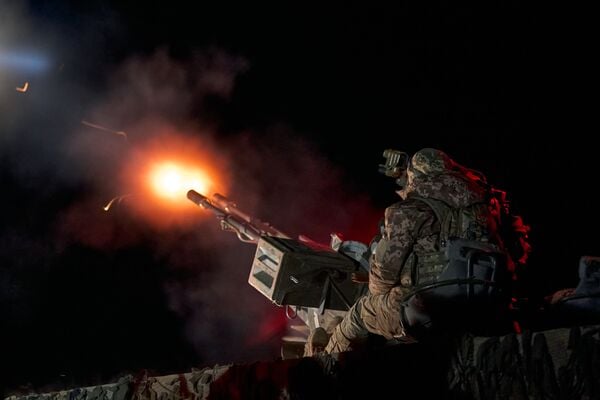
Ukrainian soldiers from a mobile air-defence group shoot down enemy drones using a ZU-23-2 Soviet 23-mm twin anti-aircraft gun on 16 April 2024 at an undisclosed location in Ukraine. (Libkos/Kostiantyn Liberov/Getty Images)
A key lesson emerging from the Russo-Ukraine war is that contemporary conflict incorporates a blend of traditional and emerging technologies and operational approaches, a senior NATO military officer said.
“Wars today will unavoidably be fought with a blend of conventional [traditional] capabilities, which we hold and continue to invest in, and those at the very leading edge of technology,” said the UK Royal Navy's (RN's) Admiral Sir Keith Blount, serving as NATO's Deputy Supreme Allied Commander Europe (DSACEUR).
In a speech discussing NATO's development and adaptation since the war began in February 2022, Adm Blount said the conflict had seen the use of many new technology types including some now being developed and demonstrated by NATO.
Underlining the central importance of sustaining effective communications networks on the battlefield, Adm Blount, speaking at the Royal United Services Institute on 31 October, said NATO is already trialling systems like Ukraine's Sky Fortress acoustic sensor network.
He noted that the use of different types of unmanned systems for different tasks, ranging from intelligence gathering, to targeting, to delivering kinetic effect, “is now normal and irreversible”. Here, he added, “The Ukrainian Navy has proved you don't need ships to wage a successful maritime campaign off your coastline.”
“The use of artificial intelligence (AI) in decision making, analysis, and other aspects of warfare is equally embedded and advancing rapidly,” Adm Blount said.
Yet this development process is not straightforward, he continued.
Looking to read the full article?
Gain unlimited access to Janes news and more...







